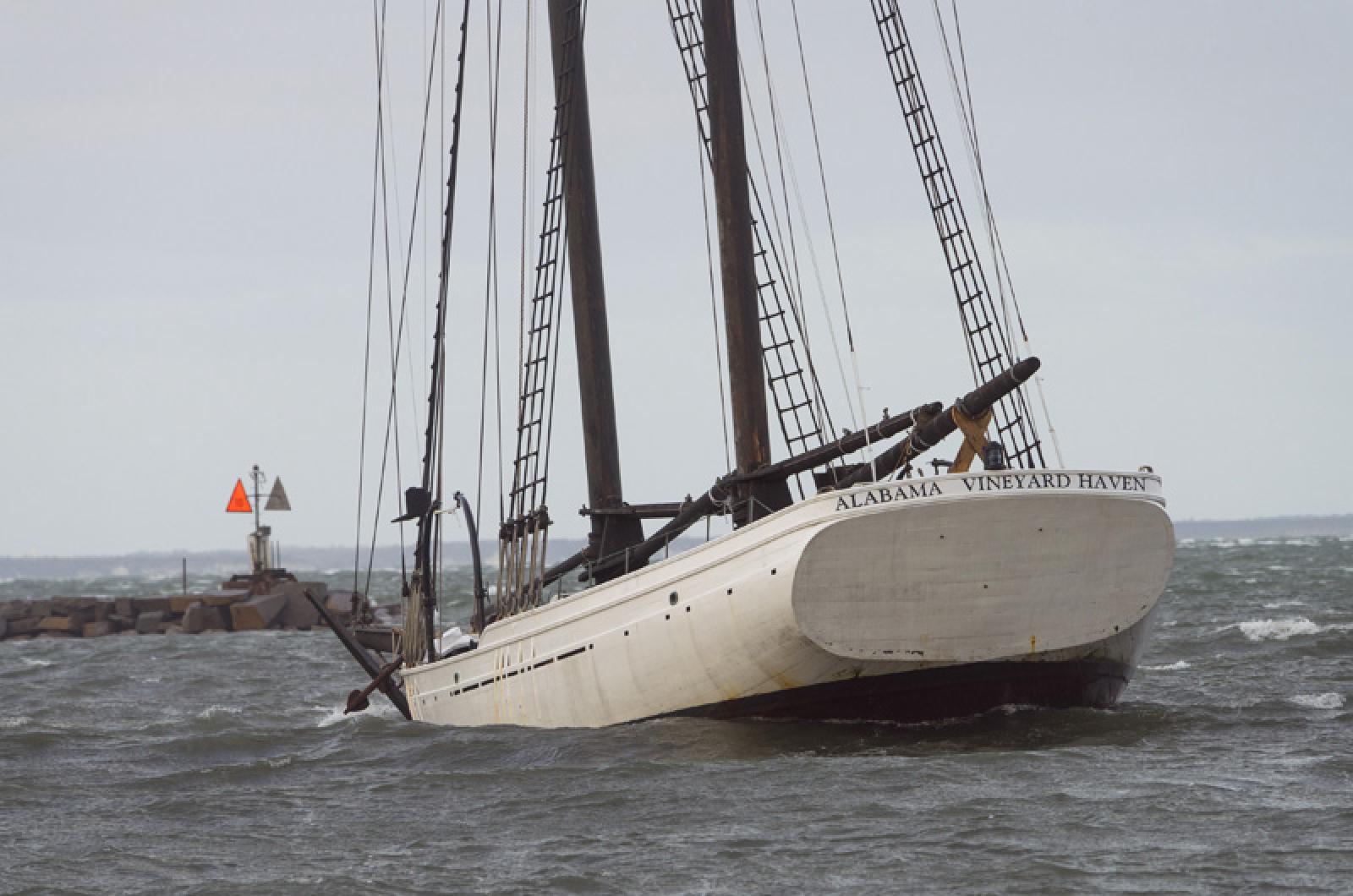George Eliot, pen name for Victorian-era English novelist and poet Mary Anne Evans, captured my feelings perfectly when she explained, “Certain winds will make men’s temper bad.”
And women’s tempers, too, can be poor during a big blow. My mood was not so good after spending two nights in Falmouth last week during the blizzard, waiting out the wind. While William Shakespeare wasn’t thinking of the ferries when he wrote King Lear, he might have been:
“Blow, winds, and crack your cheeks! Rage! Blow!
You cataracts and hurricanoes, spout
Till you have drenche’d our steeples, drowned the cocks!”
He wrote enthusiastically of the power of such weather. He also knew of its detriments, warning that wind can also cause “gout, the falling evil, itch and the ague.”
Historically, wind has always had its detractors. Ill winds were believed to be forces to be feared and carriers of evil spirits. In some traditional societies, folks were advised to beat the wind back with clubs, knives, and even drums and cymbals. And some winds were worse than others. Hippocrates observed that the west wind causes people to turn pale and sickly. (The idea of another nor’easter might do the same for many people right about now.)
And while science and meteorology are now able to explain wind and its effects, at one time its genesis was cloaked in mystery.
Greek mythology suggested that Poseidon, the god of the seas, controlled wind, and that his son Aeolus kept the wind locked up in a cave for safekeeping. Aeolus sent gentle winds through the trees by playing music on the harp, but used a conch shell to create bigger winds that could devastate the land and ocean. According to Homer’s The Odyssey, wind became uncontrollable after it escaped from a bag Aeolus presented to Odysseus to assist with his sea travels.
Goddess of the dawn Eos is credited with giving birth to the four winds, Boreas, Zephyr, Notus, and Argestes. And Eurynome was believed to be the goddess who stirred the north wind and the planet into existence by dancing to produce the wind and then mating with it to give birth to the world.
Roman naturalist Pliny the Elder insisted that winds result from “the continuous motion of the world and the impact of the stars travelling in opposite directions.” Aristotle hypothesized that “dry exhalations of the sun” produce winds, while wet ones bequeath rain. It was Greek astronomer Anaximander who first suggested wind was not a force of the gods, but a natural flowing of air. Leonardo da Vinci was definitely on the right track when he looked at it scientifically, writing that “the air moves like a river and carries the clouds with it; just as running water carries all the things that float upon it.”
No matter the origin, we have not lost our fascination with wind — especially the strongest variety. It engenders it own local nomenclature. Whether you call it a datoo (Gibraltar), etesian (Greece), Frisk vind (Sweden), Williwaw (Straight of Magellan), Chinook (northern Rockies), Monsoon (Asia), foehn, (Alps), mistral (France), zonda (Andeas mountains), or buran (Russia), it continues to be a force that commands our attention and, in the case of islanders, even governs our travel.
And lest we get the impression that wind is always to be deprecated, consider British novelist E. M. Forster’s view, “What is the good of your stars and trees, your sunrise and the wind, if they do not enter into our daily lives?”
Suzan Bellincampi is director of the Felix Neck Wildlife Sanctuary in Edgartown, and author of Martha’s Vineyard: A Field Guide to Island Nature.







Comments (1)
Comments
Comment policy »